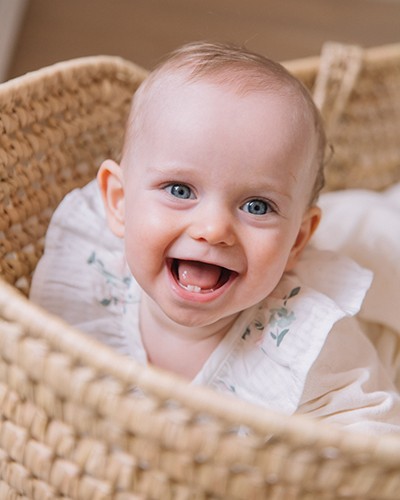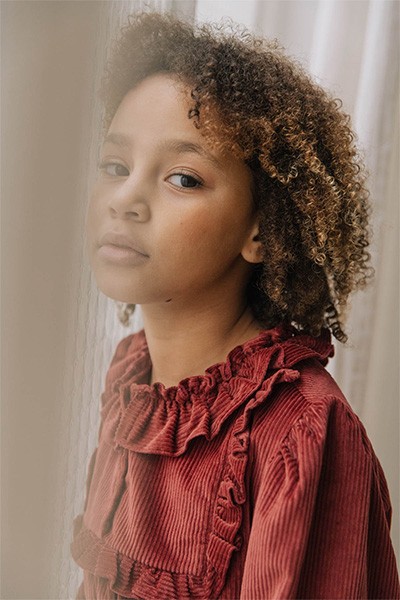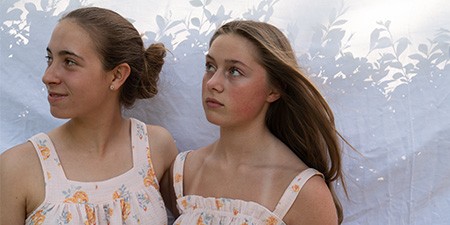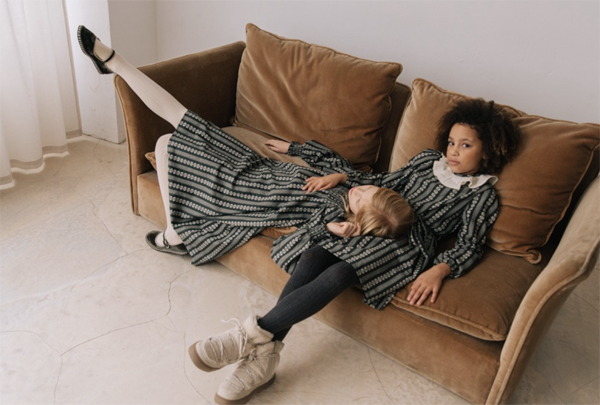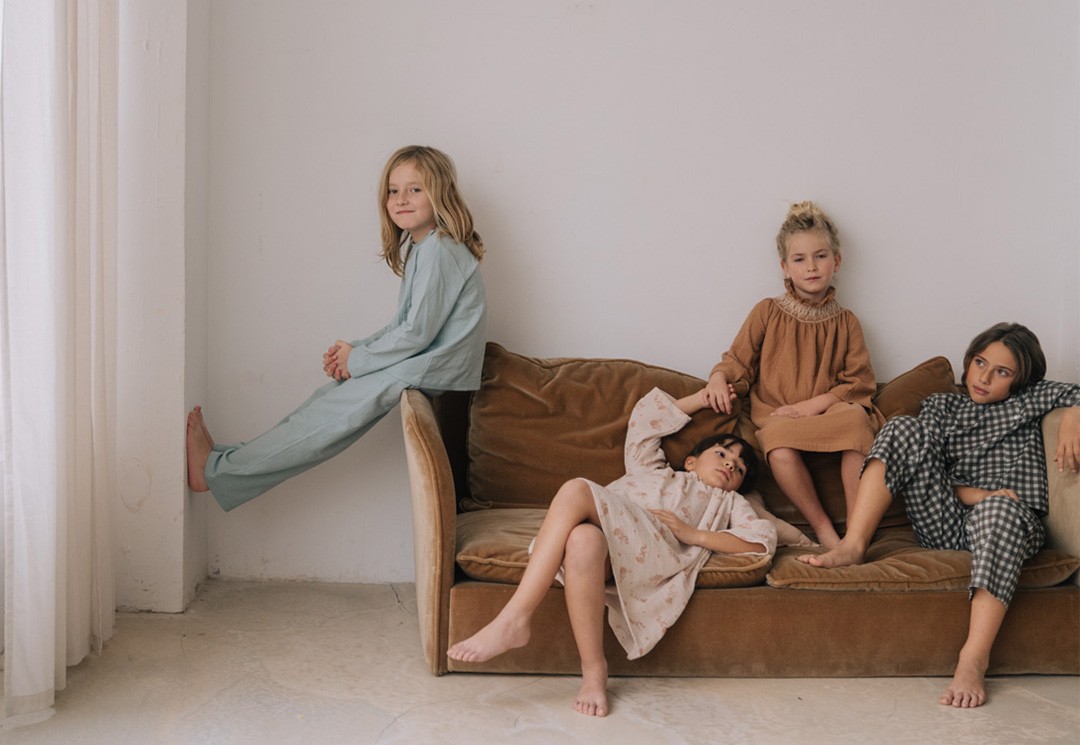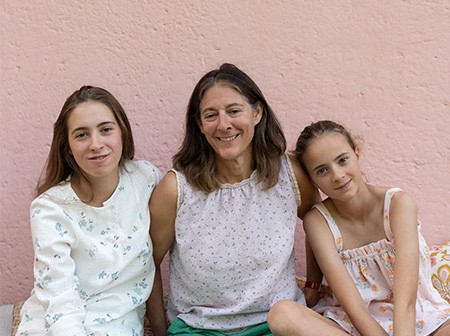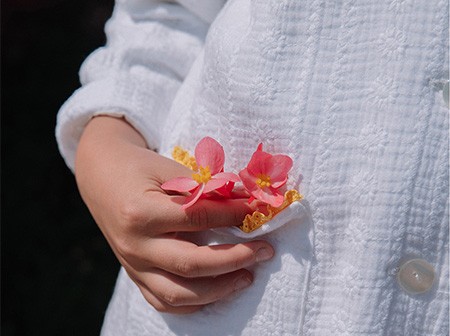Préserver la peau de son bébé: pourquoi, comment?
•
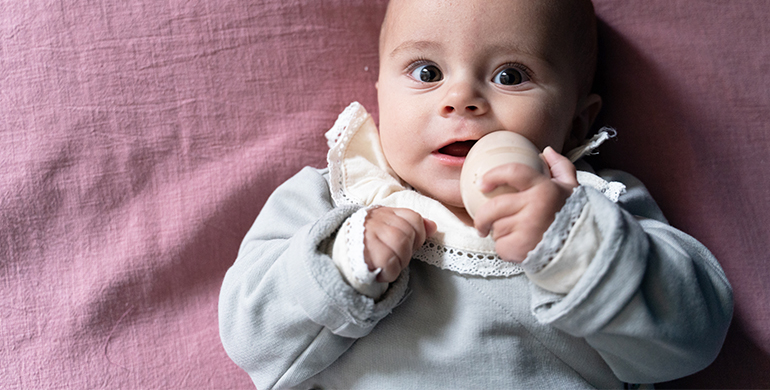
What could be cuter than a baby's neck or little hands to cover with kisses!
Babies' skin is as soft as a peach and smells good.
Behind this pretty picture, it is worth remembering that babies' skin has specific characteristics Until the age of six months, a baby's skin is not fully developed. The stratum corneum is particularly thin and permeable. It is only at the age of 2-3 years that the skin starts to mature.
The development is gradual, so care and attention must be paid to the skin of infants. At the same time, the ratio of body surface area to weight is 3 times higher in a baby than in an adult: this means that, for a given body volume, the exchange surface area is greater in a baby. The blood vessels are flush, and substances applied to the skin will penetrate even more easily than in adults.
How can we preserve the skin and therefore the health of babies?
.
1- Cosmetic products
.
- Bath time: it is not necessary to wash the whole of the baby's body every day, and it is also not necessary to immerse him in water that is too hot
- Outings: protect exposed areas from the sun, cold and wind
- Cosmetic products: choose those that are suitable for children, as natural as possible and remember that the best is the enemy of the good, sobriety is essential.
- Don't hesitate to massage the baby with a vegan oil or a body lotion for a tender moment that will also be good for the skin!
- A word of advice: ban hygiene products that contain perfume, as perfume is chemical in nature.
.
2- Clothes
.
- choice of clothing
As it is in close contact with the baby's skin 24 hours a day, clothing must be chosen with particular care.
Look for clothes that do not contain harmful substances because the chemical molecules of dyes, but also softeners, anti-shrinkage treatments, waterproofing agents, to mention only the main ones, will penetrate the body.
These synthetic molecules are mostly endocrine disruptors that interact with the hormonal system (with the risk of major problems in the long term)
It is difficult to be sure of the harmlessness of clothes because the legislation is vague, and each brand can claim to be responsible, ethical, etc., without knowing what this really means.
Beware (unfortunately) of the mention "organic cotton" because it is enough to use organic cotton yarn for the manufacturer to claim it; the yarn can be knitted, finished and dyed with toxic products without the consumer being aware of it; worse, he is tranquilized by the mention "organic cotton" whereas the garment can finally be more harmful than a garment made of conventional cotton dyed in the right way
.
An advice: look for clothes with the Oeko tex label or better,
Above all, be wary of imported clothing because some dyes are banned in Europe and customs cannot check the content of the dyes used (the price of the garment or the reputation of the brand offer no guarantee!)
Logically, the closer the garment is to the baby's skin, the more vigilant you should be. Bodysuits, pyjamas and leggings must be impeccable.
The best? a garment made from organic cotton (the certification must be on the finished fabric to avoid the risk of knitting with potentially toxic agents)
In our country, fashionable clothes that are printed in India with a pseudo-natural look are totally banned
Beware of wool which is a real irritant for the skin, dermatologists are used to say that it acts like sandpaper; even through another garment for sensitive skins.
.
- washing clothes
Wash clothes with the most natural detergent possible.
Rinsing is not enough to remove all detergent residues.
Washing an organic garment with a chemical detergent makes no sense!
Labels are now fairly widespread and guide the consumer's choice. Ecocert, in particular, is a good reference to help choose a natural detergent.
It is also preferable to do without softeners, which are difficult to rinse and may contain harmful substances.
.
- second-hand clothes
This is the current trend: choosing clothes for your baby that have already been worn seems to be an economical and sensible solution: the toxic substances have already been eliminated.
But: it is impossible to know how many washes have taken place, with which detergent, and studies show that the chemical elements of dyes in particular, are emitted for a very long time...
.
Conclusion
.
Clothes, often offered at birth or even afterwards, are not at all harmless. They contribute to the health of the baby, in the short term and also in the long term.
Dressing baby properly is one of the most important elements to ensure a good health capital.
